#klonoa spoilers
Text
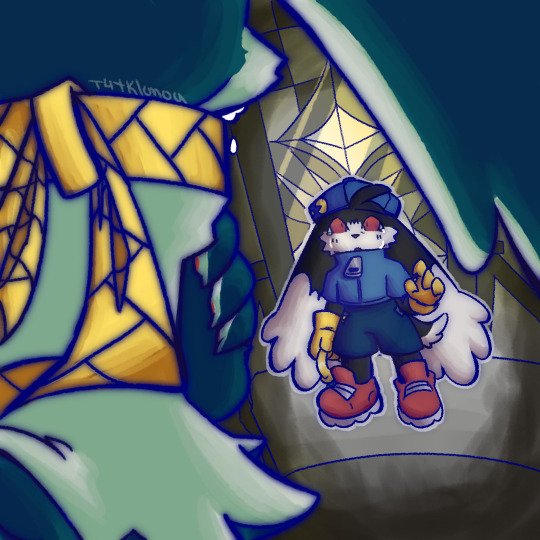
It's like looking into a mirror.
Happy 23rd anniversary Klonoa 2 Lunatea's Veil !
#klonoa#sorrow#king of sorrow#klonoa lunatea's veil#namco#klonoa Lunatea's Veil anniversary#klonoa spoilers#hoghog awoodles#rhe game ever. you'll forever be one of my comfort games. So fun once u get the hang of it#I'll try beating it 100% today and do a full run of the game too
103 notes
·
View notes
Text

135 notes
·
View notes
Text
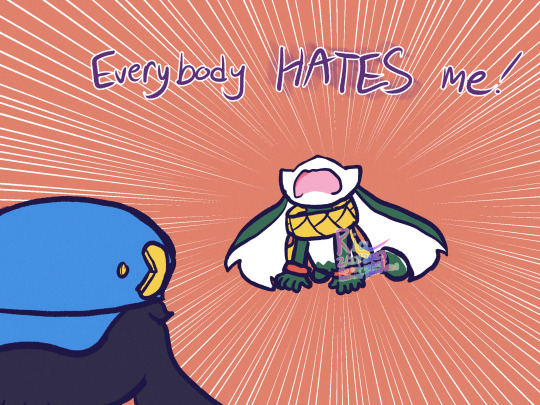
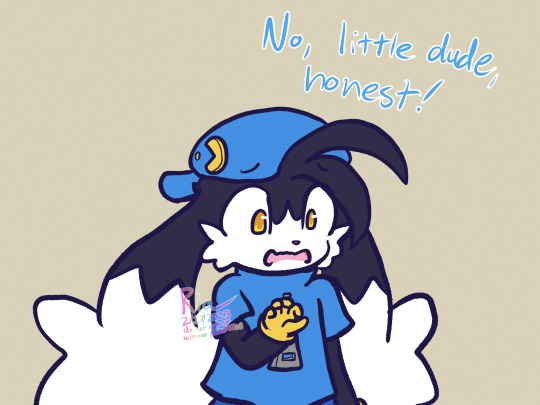


Not sure how to exactly caption this, but the idea's been stuck in my head for months at this rate.
Based on this, maybe I’ll make an animatic version sometime as well
[not ship]
#ria art moment#digital art#klonoa#king of sorrow#leorina#tat#klonoa spoilers#lunatea’s veil spoilers#// do not tag as klosorrow
167 notes
·
View notes
Text
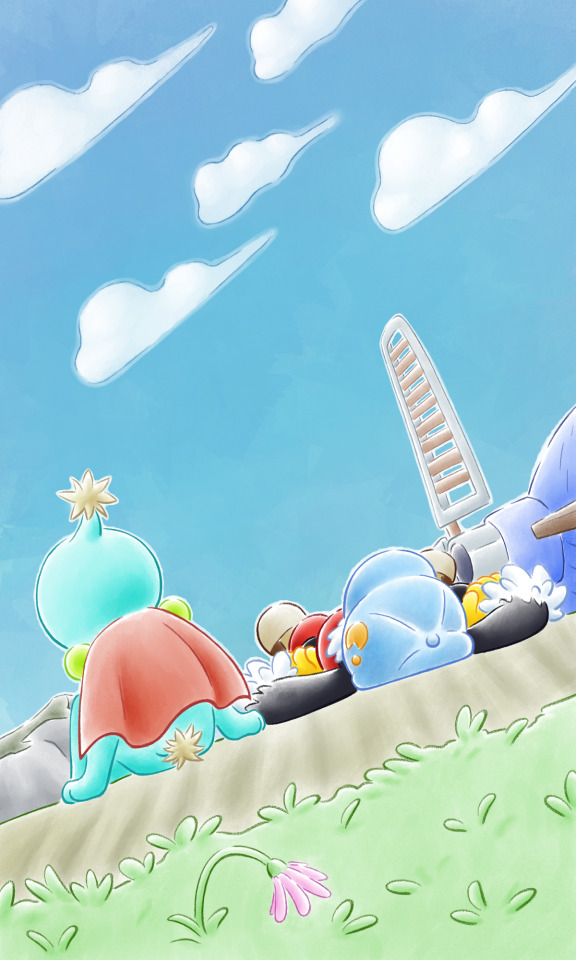
"We can play together, just like before!"
#Klonoa#Klonoa Door to Phantomile#Klonoa Phantasy Reverie Series#Klonoa spoilers#been an entire year since my wahoo cabbit boy came back from the dead out of nowhere#february 2022 nintendo direct my beloved#nimud.art#photos taken moments before disaster
104 notes
·
View notes
Text

ok so hear me out
#they should all be friends#katfl spoilers#klonoa spoilers#mad rat dead spoilers#klonoa#kirby#mad rat dead#mrd#elfilin#mad rat dead heart#klonoa huepow#kirby elfilin#idk what else to tag this as#wybie shitposts#sure
220 notes
·
View notes
Note
when something crashes into bell hill klonoa gets scared that huepow's going to get hands before going on a "but you are my best friend and i love you no matter how many hands you have" spiel
meanwhile huepow's like "oh gosh he's not going to take the truth well isn't he"
ASHDZKSDJHGXLKGHXDKGHLFDH

klonoa sees prince huepow's hands and starts openly sobbing
23 notes
·
View notes
Text
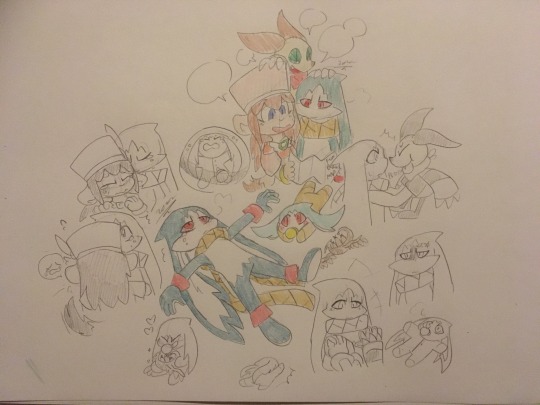
i'll learn to laugh the way you do, so just give me some time.
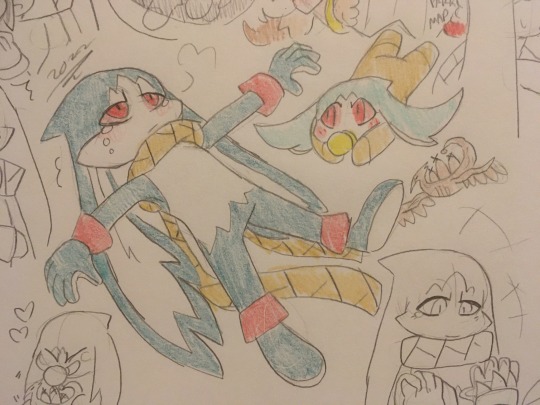
#klonoa 2 spoilers#klonoa spoilers#klonoa 2: lunatea's veil#klonoa phantasy reverie series#dustyart#klonoa lolo#klonoa popka#popka#king of sorrow
70 notes
·
View notes
Text
Huepow planted false memories in Klonoa's head to make him think some random guy was his Grandpa, and that Klonoa and Huepow were best friends for a long time. Huepow also gives Klonoa a prophetic dream, the curiosity of which encourages Klonoa further to go on his adventure in Door to Phantomile.
It is revealed by the end of the game that Huepow had called Klonoa from his own world and replaced his memories in order to get him to save the world, and implied to have gotten a random old man (Grandpa) in on the entire thing.
Throughout the game, Huepow displays a great deal of guilt for his dishonest actions, as well as growing attachment to Klonoa. He had plans to tell Klonoa at least some of the truth before the end, but he simply didn't have enough time before either the world ended or an outside force whisked Klonoa back to his home world.
It is also worth noting that, according to Word of God, Klonoa is around nine years old during the events of Door to Phantomile. We can assume Huepow is in the same age group as well, since he is a prince—yet despite his status, he refers to himself with "boku" in Japanese, and in English he calls a random soldier from a (sort-of) neighbouring kingdom a "meanie". He and Klonoa are also collectively referred to as "little puny mice", "kids", "little kiddies", "little pests", "young ones", "brats", "children", "little children", "little brats"... so that pretty much cements his age range.
So, Huepow is pretty much like Magolor but not a villain:
Despite Huepow doing something way worse than just lying, he did not do it for power or just for laughs; he did it to save his world in the face of villains aiming to destroy it, and trying to keep up the ruse of ‘The Ring Spirit Huepow, Klonoa’s Childhood Best Friend’ was visibly hurting him.
In later games, Klonoa and Huepow are shown and implied to be on good terms despite all of this. And, even in Door to Phantomile’s ending, Klonoa isn’t even mad at Huepow for lying to him at that point---he just wants to stay in Phantomile. And Klonoa does continuously cry out Huepow’s name as he’s being ripped from the world. So, there’s that.
30 notes
·
View notes
Text
Klonoa spoilers
me currently playing klonoa :

this part .....WHYYY


brooo nobody told me klonoa was this sad, then that screamm after just shatters my heart
does granpa really is.... :C
32 notes
·
View notes
Photo

#draw#klonoa#klonoa 2#klonoa lunatea's veil#king of sorrow#klonoa spoilers#fanart#digital art#bandai namco#aritsts on tumblr#autistic artist
61 notes
·
View notes
Text
thinking about how klonoa resembles a breezegale resident despite not actually being from breezegale or even phantomile at all. i wonder if along with his memories and relationships being fabricated when he came to phantomile, his actual appearance was as well. and since it was his first as adventure as the dream traveler he just ended up keeping it once he learned his role as the dream traveler. like it just feels like a huge coincidence for the dream traveler to just happen to look like a member of the very first world he's ever called to and we already know a lot of other details to make his journey there work were added retroactively.
10 notes
·
View notes
Photo
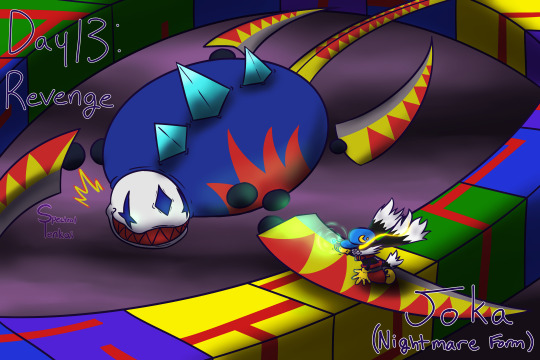


“I’LL NEVER FORGIVE YOU! NEVER!!”
KLONOA DOOR TO PHANTOMILE SPOILERS!! UNDER THE CUT!
So here I was getting into Klonoa and for one of those classic days collect-a-thon games, I did NOT think I would get gobsmacked by feels. Holy sh1t man I knew Joka was my least fav jester (mind you, I have jester favs), what he did to grandpa was definitely horrible to me and boy did I want to hug Klonoa so hard after what had happened. Brutally ends Grandpa’s life and I swear I want Klonoa to go absolutely insane and yeet Joka into oblivion
#boss rushtober#klonoa#klonoa spoilers#klonoa phantasy reverie series#klonoa door to phantomile#joka#jester#a very puntable jerk#i really wanna see klonoa go feral as hell and destroy people#i fear what trauma he goes through in the second game that i have yet to play#this game went from cute to 'oh no' hella quick after one part#bandai namco
36 notes
·
View notes
Text

Some more Klonoa doodles
14 notes
·
View notes
Text
Immediate thoughts on completing Klonoa 2

Thanks to the Phantasy Reverie Series, I finally had the chance to play Klonoa 2: Lunatea’s Veil. And put simply, I loved it. It built on the first game mechanically in numerous ways that I found compelling. It had a solid difficulty curve from easy to surprisingly hard. The remastered visuals looked lovely, the soundtrack was excellent, maybe even surpassing the first game. It had endearing characters and a straightforward, yet engaging and well presented story
Well, I say ‘straightforward’, but right now, I want to talk about my takeaway from that story, and especially the ending. To do so, I’m going to have to spoil both Klonoa 2 as well as the first game Door to Phantomile, so consider this your warning if you haven’t played these games (which you should).
First, I want to take some time to appreciate the core moral of Klonoa 2. We travel through four kingdoms that each guard an element of human emotion, Tranquility, Joy, Discord and Indecision. Four traits that, the game tells us, are what define how we live in harmony. The climax revolves around the return of the lost Fifth Kingdom. This turns out to be the Kingdom of Sorrow, the fifth emotion. This kingdom was rejected and sealed away, and Lunatea hid behind a veil of ignorance, forgetting that this sorrow even existed (hence the title). The main antagonist, the King of Sorrow, seeks to return and blanket the world in sorrow after it denied him and his people for so long. The game ends with Klonoa, wanting to help the King rather than destroy him, choosing to accept the fifth kingdom, because Sorrow is just as much an important emotion as any other.

I really like this message. Our ability to feel sadness is what allows us to appreciate the good times of our lives. If you bury your worst memories, your pain will only fester until it bursts out of control, as the King’s did. These feelings shouudn’t be shunned but accepted. Pixar’s Inside Out was applauded for including this important truth in a kid’s story in 2016, but Klonoa pulled it off in 2001, in a PS2 game no less.
However, there’s a parrtcular aspect of Klonoa 2′s message I want to address. Specifically, how it links back to the first game. To do so, I need to touch on the Klonoa series’ approach to canon. In doing so, I risk exposing my own inexperience with the series, having played the first game years ago (and replaying it several times), experiencing the second only now, and only sort of knowing about the handheld games while trying to avoid spoilers. If I misunderstand the series, I invite Klonoa fans to correct me in the comments.
To my understanding, the Klonoa games are not all directly connected. Klonoa’s status as a Dream Traveller coming to new realities and dreams in each game leaves every story mostly seperate. This is why Lolo can show up in Klonoa 2 and again in Dream Champ Tournament and Heroes with a different backstory. It’s the same person, but different versions over different dreams. And it’s left up to interpretation if Klonoa even remembers each one after he leaves. After all, do you remember all your dreams?
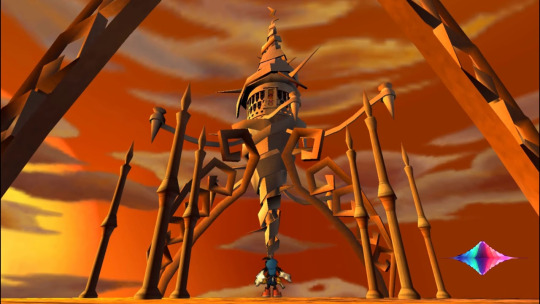
Anyway, that’s all just setting up context. Let’s talk about the level, The Kingdom of Sorrow in Klonoa 2 and how it completely recontextualised the ending for me. One of the final levels of the game, the music track here is called Hyuponia: Ruin of Sadness. It’s a hauntingly desolate track, that perfectly sets the mood for exploring this abandoned ruin that embodies the emotion of sadness itself, and I loved listening to it as I went through the level...
And then I heard something very familliar. The Windmill Song from Door to Phantomile. And when I realised I wasn’t just hearing things, I got chills.
Nor is this the only piece from the first game subtly integrated into the track. You can also hear the ending theme,The Song of Rebirth, and the intro theme And I Begin to Wonder, among others. Music that serves as a memory of Klonoa’s own sorrow.
Anyone who’s played Door to Phantomile will doubtless remember that ending. Put simply: Klonoa learns that Phantomile is not his real home. As a Dream Traveller he was summoned there to save it from evil, and was implannted with fake memories of living there his whole life by his supposed best friend, Huepow, to motivate him to save the world. The game ends with Huepow guiltily revealing the deception, and Klonoa, horrified at this, being pulled from Phantomile back to his own world. Unlike later games where Klonoa seems to flit from dream world to another knowingly, here he was coerced and manipulated into it, and the act of leaving was crushing.

In Klonoa 2, while his role as the Dream Traveller is mentioned, Klonoa never mentions the events of the first game. One could speculate that he either doesn’t remember it, or only remembers it vaguely, like a half-forgotten dream. But even if it was a dream, those feelings were real to Klonoa, that’s the whole point of Door to Phantomile’s tragedy. Klonoa himself, therefore, has his own forgotten sorrow. Much like Lunatea itself.
By integrating music from Klonoa’s past adventure into this level, the game imples that Klonoa is, on some level, confronting his own sorrow, and players of the first game will have that in mind as they learn the truth about the KIngdom of Sorrow directly afterwards, encouraging them to link the two in their minds (at least, that was my reaction).
The lesson about accepting that painful things happen, that they shouldn’t be pushed down, that it’s ok to feel sadness so you can heal and remember the good times, is not only a lesson Lunatea as a world needed to hear, but so did Klonoa.

This comes full circle in the game’s final scene, when Klonoa says goodbye to Lolo. When Klonoa was seperated from Huepow he was devasted, refusing to accept the horrible truth that his best friend had been manipulating him, that his life in Phantomile was a lie. He clung to Huepow even as he was being magically wrenched out of the world. In the sequel, Lolo is this game’s Huepow analogue. She is Klonoa’s companion who powers his Wind Ring, she grapples with the responsibility of a lofty position, (a priestess rather than a prince), and parts ways with Klonoa at the end of the game.
But look at the difference in how Klonoa reacts. He’s not crying, he’s not screaming in denial. He’s not being forcibily wrenched out of the world. He clearly knows what’s about to happen this time, that he has to leave. He lets Lolo cry and vent her feelings before giving her some important advice:
“Lolo...I may leave this world..but we’ll always be...together. I believe that if you don’t forget the sadness of this moment, we’ll always be...together...Okay?”
After these parting words, Klonoa walks away calmly. The dream world of Lunatea fades away around him, and the final shot of the game is him waking up back in his own world (which is also an analogue for the player, using their inputted name like in the first game).
Klonoa has not only learned from his experiences with the King of Sorrow. He has, even if just on an subconscious level, processed his past suffering in Phantomile, and accepted his responsibility as the Dream Traveller. He’ll keep wandering from dream to dream, helping wherever he’s needed. Eventually he’ll have to leave each time, and that will always be sad, but instead of forgetting those experiences, he’ll endure that pain and walk away from it, remembering the good parts along the way.
Maybe I’m just reading too much into it. Or alternatively, maybe this was super obvious, and Klonoa fans have been saying all this for years. But I wanted to write down how this ending, and this game for that matter, stuck with me. Klonoa 2 is a charming, yet thought-provoking game, that I’m thrilled I finally got to experience, and one I won’t forget anytime soon.
#also yes my images are from the ps2 version as they’re easier to find online#the remastered cutscenes naturally look great#klonoa#klonoa 2 lunatea's veil#klonoa phantasy reverie series#klonoa spoilers#ending thoughts#story analysis? i guess?
15 notes
·
View notes
Text
The Kingdom of Sorrow (A Klonoa 2 ramble - Spoilers!)
The Kingdom of Sorrow is one of the most well executed late-game mood changes I've ever seen a game pull. Now, Klonoa 2's plot is a little bit scrambled, with things becoming relevant and irrelevant too fast for much of it to matter, but one thing is made very, very clear.
Do not connect with the Kingdom of Sorrow
Off the back of Klonoa 1, you might think "Damn, guess there's some doomsday egg in there or sinister villain waiting" and this expectation is maintained as you scramble to cripple the Ark flying straight to it. Hell, you're even given a boss where the power of Sorrow overcomes the 4 other elements to completely transform Leorina - it seems like a really bad place to be.
And then you arrive.

And there's... nothing. Empty corridors, empty living spaces, and an ominous haunting melody that almost seems like it forgot itself. It borrows bits and pieces of older music from the two games as if it wants to hide, pretend to be cheerier, before it eventually gains a little clarity as it drones on.
This is an excellent twist of storytelling, even if the rest isn't exactly consistent.
"What if everyone just THOUGHT there was pure evil sealed away?"
Your whole adventure comes crashing down. What was the point? You gathered some magic orbs, but for what? To blow up a kingdom already reduced to sand and regrets? Who would call this their villainous fortress?
Is a villain in this fortress at all?
No, there isn't. The real villains turn out to be the self-obsessed Lunateians, lost in their own kingdoms to the extent that all others cease to mean anything to them. And for the Kingdom of Sorrow? That means no shoulders to cry on. No support in the lowest of times. No healthy grievances, no one to tell you you're too harsh on yourself.
Such was the fate of the King of Sorrow, and in the end, it spelt his doom.
You have to wonder where the others went.
3 notes
·
View notes
Note
The tonal shift that happens after Vision 3-2 is very good. Like, right in the ending cutscene of the level, Joka—who had shown himself to be more bark than bite up to that point—does something unexpected and listens in on an important conversation before threatening Klonoa's grandpa. And then, in Vision 4-1 we have to rush through a ruined castle that doubles as an abandoned warzone and a graveyard. And furthermore after that, in Vision 4-2... oh, you know. :)
It's soooo gooooooooood!
IT'S SO GOOD going through the wind ruins is an unexpected atmosphere that goes from a lighthearted adventure to building up the dread of "what's gonna be on the other end of this" only for. Y'know. and that's the huge turning point of leaving behind the carefree romp and instead feeling like you're in a race against time, especially with 5-2's eclipse and the bossfight and !! AAAA KLNOAAAAA
8 notes
·
View notes